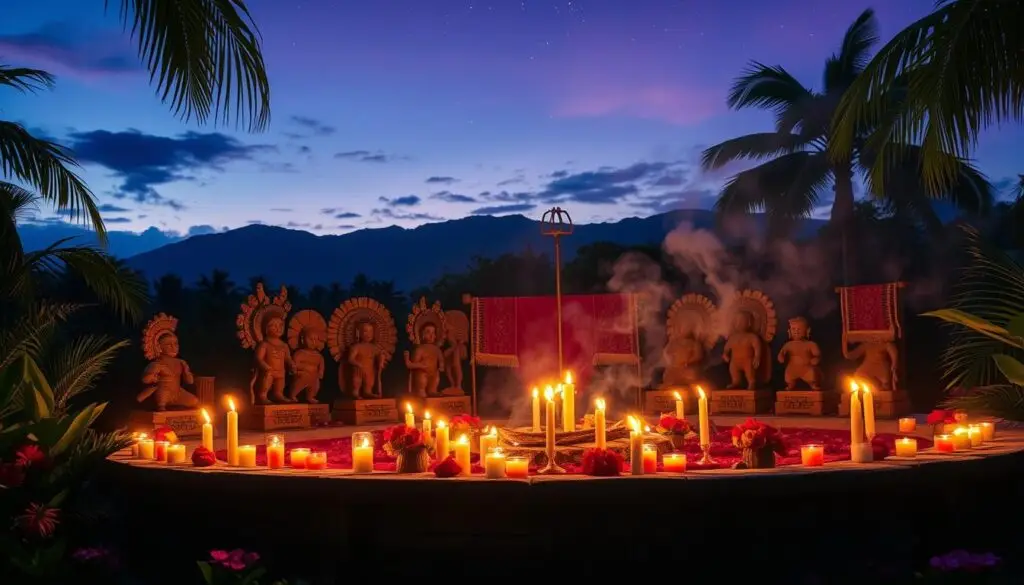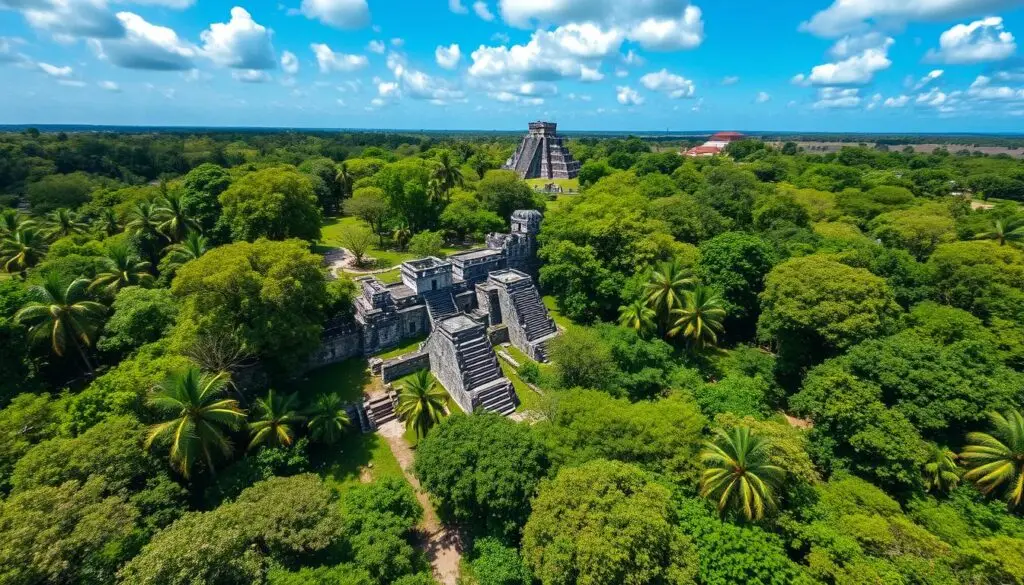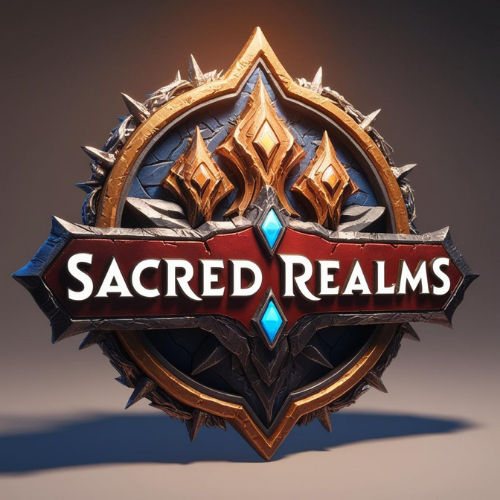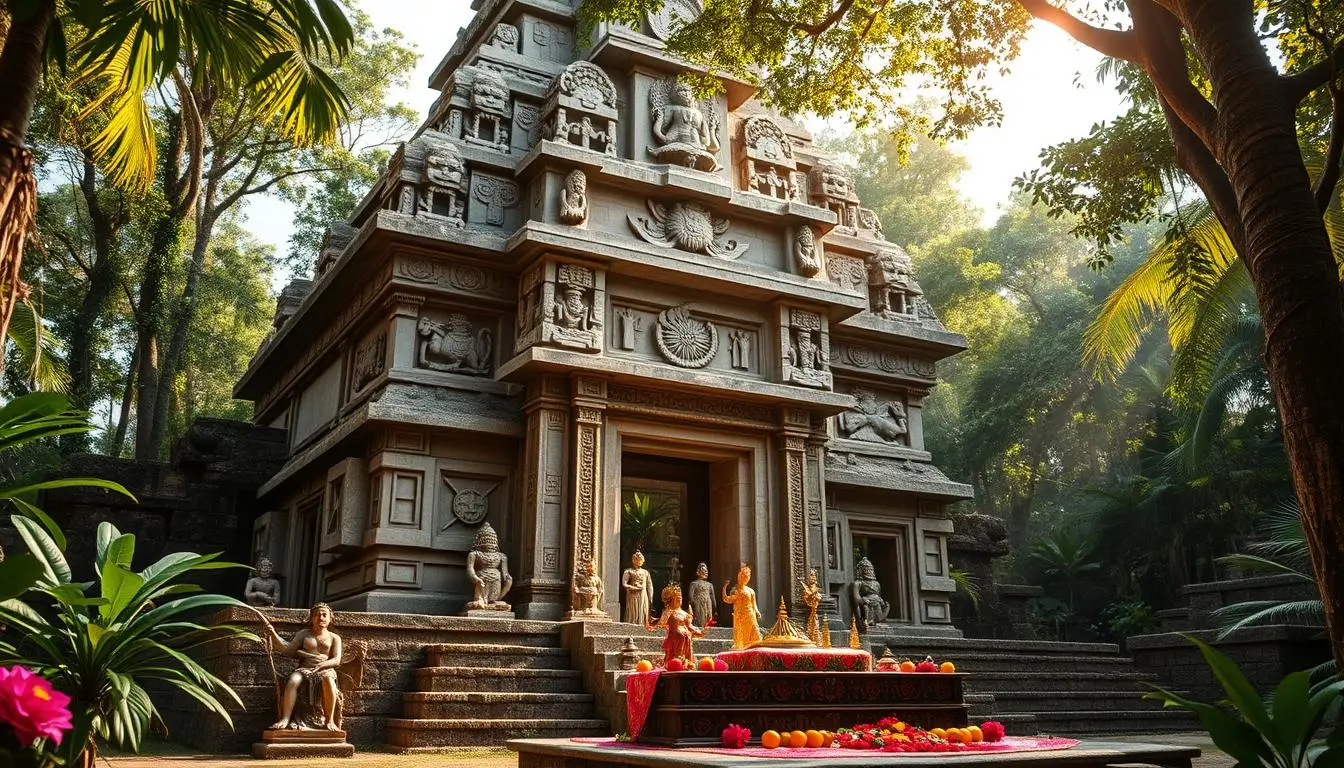Mayans Spirituality and Beliefs: Did you know the ancient Maya believed in three creations of humanity? Their myths tell of people made from mud, then from wood and reeds, and lastly from maize and god’s blood. This shows their deep belief in the power of their gods.
The ancient Mayan religion is full of complex beliefs. It shows how the Maya saw the world and the universe as connected. This connection was key to their daily lives and spiritual practices.
Key Takeaways
- The ancient Mayan religion includes belief in three creations of humanity, each with its own unique mythos.
- The Maya deities were central to their cosmology, with gods representing natural and celestial forces.
- Huracán, known as the Heart of Heaven, was vital in forming Earth and humanity.
- The Maya calendar, used today, was tied to their spiritual and agricultural cycles.
- Modern Mayan spirituality blends ancient traditions with today’s practices.
Introduction to Mayan Spirituality
Mayan culture and spirituality were incredibly deep. They showed a strong bond between the Mayans and their environment. Their worldview was polytheistic, with many gods and goddesses for nature’s elements like the sun and maize.
Understanding the Roots of Mayan Beliefs
The Mayans saw the divine everywhere in nature. They believed in ‘K’uh,’ or sacredness, in all things. This showed a deep respect for the spiritual in every part of life.
Each person had a spiritual guide, called ‘Wayob.’ It could appear as an animal or in dreams. This guide offered important advice, showing how big a role spirituality played in their lives.
The Importance of K’uh in Mayan Religion
The Mayans practiced rituals like bloodletting and human sacrifices. These were to please their gods. These acts showed the importance of ‘K’uh,’ their sacred connection.
Temples were key in these ceremonies. They were built with stone and had detailed carvings. These places were not just for worship but also showed the deep bond between the Mayans and their gods.
What was the Mayans spirituality?
The Mayans believed deeply in nature and the cosmos. They saw the universe as three parts: earth, sky, and the Underworld. Each part was important in their spiritual lives.
Nature and the cosmos were not just parts of their world. They were key to their religion and daily life.
The Role of Nature and the Cosmos
The Mayans loved natural places like caves and water bodies. They thought these places were doors to the Underworld. The Yucatan Peninsula, with little water, made these places even more special.
They were key for rituals and spiritual activities.
The sky was also important to them. They believed in the sun and clouds moving through it. Maya art showed symbols of these movements.
They believed in a world beyond what we see. This connected their daily lives to the cosmos.
Cyclical Time and Creation Myths
The Maya saw time as a cycle. They had calendars to show this. These calendars helped them understand the universe’s flow.
They believed in myths that explained the world. These myths told of supernatural beings and guided their lives.
The Maya also believed in an underworld, Xibalba. It was a place where things were different. Their myths helped them understand the world and how to live.
| Aspect | Significance in Mayan Spirituality |
|---|---|
| Nature | Considered sacred, with elements like caves and cenotes seen as passageways to the underworld. |
| Cosmos | Viewed as a realm traversed by divine entities; deeply integrated into religious practices. |
| Time | Perceived as cyclical; reflected in complex calendar systems and creation myths. |
| Mythology | Rich narratives involving supernatural beings; structured the moral and spiritual framework. |
Understanding Mayan spirituality shows how they lived their beliefs. It reveals a complex and meaningful religious tradition.
The Mayan Calendar: A Spiritual Tool
The Mayan calendar was more than just a way to keep track of time. It was a spiritual guide for the Maya. It showed how the universe, our lives, and rituals are all connected.
Components of the Mayan Calendar
The Mayans had three main calendars: the Tzolk’in, the Haab’, and the Long Count. Each calendar had its own role in recording time and guiding daily and spiritual activities.
- Tzolk’in: A 260-day calendar for spiritual events like divination and religious ceremonies.
- Haab’: A 365-day solar calendar for tracking the year, closely tied to farming.
- Long Count: For tracking long periods, showing the Mayan view of time and the universe.
The Tzolk’in and Haab’ Calendars
The Tzolk’in and Haab’ calendars worked together in a 52-year cycle. This cycle helped plan religious events and farming. It allowed the Maya to predict and prepare for important events.
The Significance of the Long Count
The Long Count calendar predicted and marked important events. It measured time in kin, uinal, tun, katun, and b’ak’tun units. This way, the Maya could track cycles and events, both mythological and real.
| Long Count Unit | Days | Notes |
|---|---|---|
| Kin | 1 | Basic unit of time |
| Uinal | 20 | 20 Kins |
| Tun | 360 | 18 Uinals |
| Katun | 7,200 | 20 Tuns |
| B’ak’tun | 144,000 | 20 Katuns |
The Mayan calendar system highlighted spiritual cycles and events. It guided rituals, ceremonies, and farming. It showed the deep spiritual wisdom of the Maya civilization.
Sacred Sites and Celestial Alignments
The ancient Maya were masters at linking their buildings with the stars. They knew how to mark important events in the sky. Places like Calakmul and Becán were key to their spiritual and farming lives.
Calakmul and Becán: Cosmic Connections
Calakmul and Becán were picked for their cosmic views. These sites are famous for their links to the sky, like equinoxes and solstices. The buildings were set up to catch these moments, showing the Maya’s love for the stars.
How Temples Aligned with Celestial Events
The Maya built temples that looked up to the sky. They aimed to match the sun, moon, and stars. This helped priests in their rituals, linking the people with the heavens.
The Spiritual Significance of Astronomical Observations
The Maya saw the stars as deeply spiritual. Their sky watches helped predict events, keeping their community safe. These views were seen as a way to talk to the gods, showing the connection between the sky and life.
Major Mayan Gods and Goddesses
The Mayan gods and goddesses show the depth and richness of their mythology. Each god had a big role in life, from creation to the underworld.
Itzam Ná and Ix Chebel Yax: The Creators
Itzam Ná was a key creator god in Mayan mythology. He was linked to writing, medicine, and divination. His partner, Ix Chebel Yax, was also important in creation stories. She represented the balance between male and female in Mayan spirituality.
Together, they shaped the world and the heavens.
Huracán: Heart of Heaven
Huracán, meaning “One Leg,” was a god of storms and chaos. He was seen as a creator and controlled winds and storms. His role also touched on agriculture, where he could both help and harm.
Hun H’unahpu: The Maize God
Hun H’unahpu was key in Mayan beliefs, mainly in farming societies. As the maize god, his story was central to understanding crops and food. His myths are deeply rooted in Mayan culture, showing maize’s importance in rituals and daily life.
Chak: The Rain God
Chak was in charge of rain, storms, and fertility in farming. He was often shown with a long nose and fangs, holding a water vessel or lightning ax. His worship was vital for good harvests, with many rituals to please him.
The Mayan gods and goddesses were deeply woven into Mayan life. Their stories and traits are fascinating to scholars and fans. They reveal the complexity and wisdom of the Mayan civilization and its mythology.
Mayan Rituals and Ceremonies

Mayan rituals and ceremonies were key to understanding the Mayan civilization. They ranged from daily offerings to grand ceremonies with human sacrifices. Each ritual was important, linking the community to the divine and the universe.
Offerings and Sacrifices
Human sacrifice was a big part of Mayan religion. Slaves or prisoners were often used, with blood taken from ears or tongues. The Maya also danced to please their gods, like during weddings.
The ch’achaak ritual asked for rain from the rain god during dry times. It happens from March to June. Each month had ceremonies for different gods, showing how time and spirituality were linked in Mayan culture.
The Role of Shamans in Mayan Society
Shamans were key in Mayan religious life. They connected the physical world with the divine. They led rituals for change, like during illness or to ensure a good future.
They also led ceremonies for agriculture, honoring the dead, and fertility. Their spiritual connection was vital for community harmony and balance.
Meditative Practices and Spiritual Journeys
Meditation and spiritual journeys were big in Mayan rituals. These journeys were for wisdom or divine connection. The Ch’iyaj (New Fire Ceremony) was held every 52 years, and the Ix K’ab’ Tzi’ (First Menstruation Ceremony) marked a girl’s coming of age.
The Pok Ta Pok (Mesoamerican Ballgame) had deep religious and cosmic meanings. It symbolized the battle between day and night. Mayan rituals showed their deep spiritual beliefs.
| Ritual | Purpose | Practice Period |
|---|---|---|
| Human Sacrifice | Appease gods through the giving of life | Throughout the year |
| Ch’achaak Ritual | Call for rain from the rain god | March to June |
| Mak Festival | Celebrate and ensure fertility in agriculture | Annual |
| Ix K’ab’ Tzi’ | Mark a girl’s transition to womanhood | Based on individual’s age |
| Pok Ta Pok | Reflect cosmic dualities and balance | During important calendrical events |
The Influence of Mayan Mythology
Mayan mythology is filled with stories of gods and creation myths. These stories deeply influenced the Maya civilization. They shaped their culture and spiritual views, affecting every part of their lives.
The Popol Vuh, a key Mayan creation myth, tells of the world’s creation. It describes the gods’ roles in creating humans. This text shaped their beliefs, showing the connection between humans and gods.
The Mayans also showed their spirituality in their buildings and studies of the sky. They aligned their cities with stars and planets. This shows how myths and science were intertwined in their culture.
In Guatemala today, Mayan myths are alive. Over half the people have Maya roots. Traditional ceremonies are becoming more popular again. This shows the lasting impact of Mayan spirituality.
| Influence Areas | Examples |
|---|---|
| Architecture | Sacred site alignments with celestial events |
| Social Structure | Mythology guiding the organization of societies |
| Astronomy | Use of the long-count calendar and astronomical observations |
| Modern Culture | Revival of traditional ceremonies and rituals |
Exploring Mayan myths helps us understand their civilization better. Each myth connects the past to today. It shows how Mayan spirituality shaped their culture and beyond.
Mayan Spirituality Today

Despite centuries of change, Mayan spirituality lives on. In the Yucatán Peninsula, these traditions are kept alive. They show the rich heritage of the Mayans.
Modern Practices and Ancient Roots
Today, Mayan spirituality blends old and new. Communities in the Yucatán honor their ancestors’ beliefs. This mix of past and present is seen in their ceremonies and daily life.
Elderly people in places like Chunyaxche and Tres Reyes share their knowledge. They teach about the forest, land, and universe. This shows the ongoing importance of these elements in Mayan spirituality.
Exploring Mayan Sites in the Yucatán Peninsula
Visiting Yucatán Mayan sites gives deep insights. At Coba, you see structures from 600-1400 A.D. These buildings align with the stars, showing the Mayans’ cosmic connection.
Coba’s governance system is also fascinating. It had a sovereign and an elite council. This shows a spiritually guided political framework.
Mayan Spirituality in Daily Life
Today, Cobaneros make a living from tourism. Yet, they deeply connect with their ancestral lands. Milpa farming links them to their past and helps during hard times, like the COVID-19 pandemic.
The Yucatec Maya see nature as interconnected. They believe in reciprocal relationships with the earth. This is shown in their rituals and ceremonies, which honor the land.
| Aspect | Ancient Mayan Practice | Modern Importance |
|---|---|---|
| Architecture | Building temples and pyramids | Preserved in tourism and heritage sites |
| Spiritual Leadership | Sovereigns and elite councils | Guides community decisions and practices |
| Agriculture | Milpa farming | Continues as a vital economic activity |
| Rituals and Ceremonies | Offering and sacrifices | Maintained in modified forms |
Conclusion
The Mayan spirituality is a rich mix of beliefs, cosmic views, and cultural practices. It goes beyond just history. As I look back, I see how the Maya connected their lives with the divine and the universe. Their sacred sites and calendar systems show how spirituality was woven into their daily lives.
The Mayan civilization thrived in places like the Yucatan Peninsula and Guatemala. Their cities had 5,000 to 50,000 people, reaching up to 10 million at its peak. Though the Spanish conquest destroyed much of their knowledge, codices like the Dresden and Madrid give us a glimpse into their world.
Today, about 5 million people in Mexico and Central America speak Maya languages. Around 40% of Guatemalans have Mayan roots. This shows the need to keep Mayan culture alive. Learning about their calendars, rituals, and gods helps us understand their past and appreciate their spirituality today. The blending of old rituals with Christianity among modern Maya shows their spiritual heritage’s strength.
FAQ
What were the foundational beliefs of ancient Mayan spirituality?
The ancient Maya believed in a deep connection with nature. They saw the divine in every part of their world. This belief was called ‘K’uh’, showing that everything was sacred.
How did the Maya view the natural world and the cosmos?
The Maya saw the natural world and the sky as connected. This connection was key to their daily life and spiritual practices. Nature and the sky greatly influenced their farming and spiritual beliefs.
What role did the cyclical nature of time play in Mayan beliefs?
Time was seen as a cycle in Mayan beliefs. Their calendars and myths showed this understanding. It helped shape their spiritual and practical lives.
How was the Mayan calendar constructed, and what was its significance?
The Mayan calendar had several cycles, including the Tzolk’in and Haab’. It was used to plan important events. This calendar was very important to the Maya.
What are some key sacred sites of the Maya connected to celestial events?
Sites like Calakmul and Becán were aligned with the sky. These alignments helped the Maya track the stars. This was key for their rituals and farming.
Who were the major gods and goddesses in Mayan mythology?
Important gods included Itzam Ná and Ix Chebel Yax. Others were Huracán, the Maize God, and Chak, the Rain God. These gods were central to Mayan stories.
What were some common rituals and ceremonies practiced by the Maya?
The Maya had many rituals, from daily offerings to big sacrifices. Shamans led these, guiding the Maya in their spiritual quests. These quests were for wisdom and connection with the divine.
How did Mayan mythology influence their culture and spirituality?
Mayan myths shaped their understanding of the world and their spirituality. These stories influenced their culture, from social structure to studying the sky.
How is ancient Mayan spirituality reflected in modern practices?
Mayan spirituality lives on in the Yucatán Peninsula today. Ancient beliefs are part of modern practices. Sites like Tulum help keep these traditions alive.
References
United Nations Permanent Forum on Indigenous Issues


[…] helped me feel comforted during hard times. They let me process my emotions and understand my spiritual beliefs better. They showed how dreams can connect us to the spiritual world, giving us insightful dreams […]
[…] Spiritual Practices […]
[…] be looking for innocence, a fresh start, or something to care for. These ideas are common in many cultures and spiritual views. Babies often stand for purity, hope, and new beginnings. It’s interesting to think […]
[…] angel number 333 is a powerful spiritual sign. It urges you to explore your spirituality and trust in higher guidance. By understanding 333, you can use its energy to achieve your goals […]